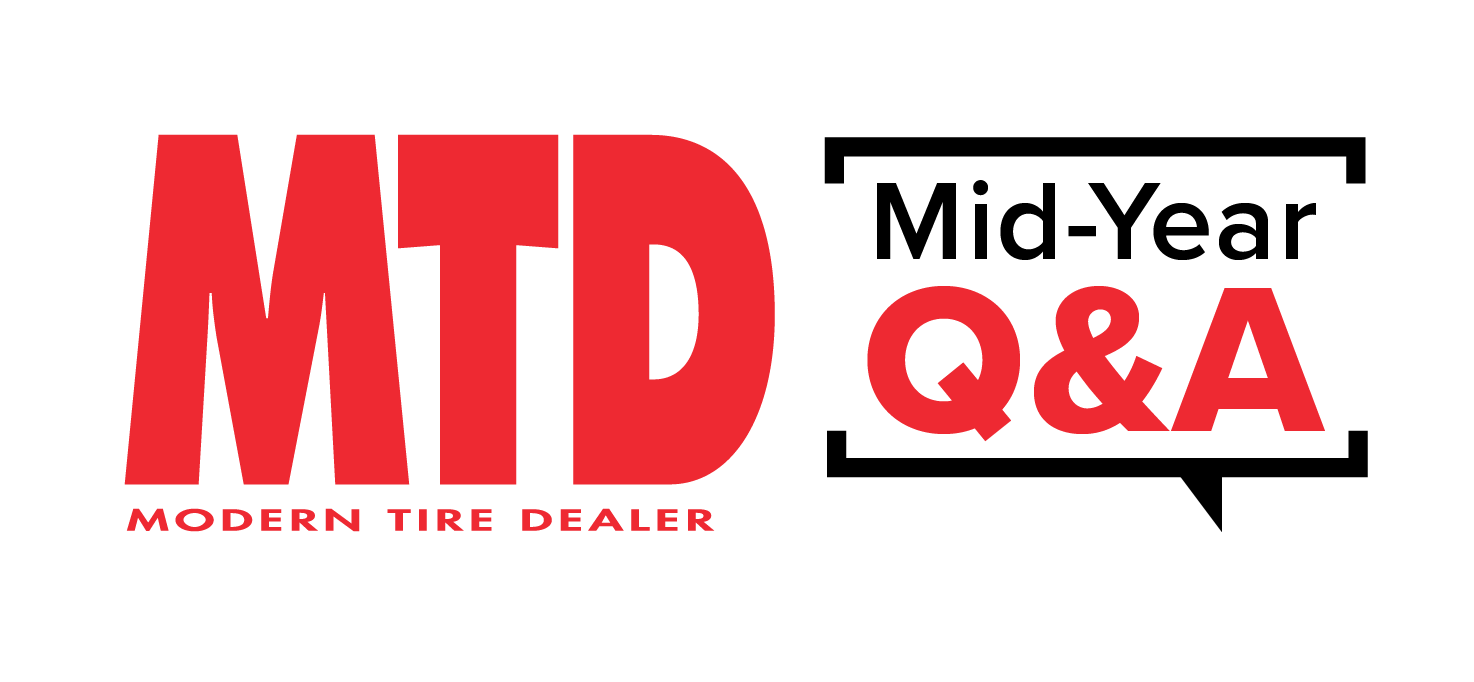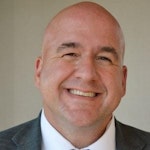Paolo Ferrari, executive chairman of Bridgestone Americas Inc. and president and CEO of Bridgestone West, discusses the state of the company’s U.S. business in this MTD exclusive.
MTD: First-half numbers aren't in yet, but can you describe the state of Bridgestone Americas’ business at the mid-year point? What were some of the challenges and accomplishments?
Ferrari: Bridgestone Americas is a big business – consumer, commercial, ag, OTR, OE, replacement, wholesale, retail, solutions – so trying to unpack it all at once is not easy. But overall, we always measure ourselves, relatively speaking. So how are we doing relative to the market? Very strongly.
Across the board, in our consumer business - in an industry that is still growing (in the) low single digits - we are still overperforming the industry. Our investment in products over the last several years is paying off.
Our investment in coverage – having really nice, complete coverage in HRD (high rim diameter) and ultra-HRD (ultra-high rim diameter tires) - has already proven to be successful. And therefore, thanks to this and thanks to our strong distribution, I think we’re doing well also from the market share point of view.
We’d certainly like the market to pick up pace a little bit, but whatever the market is ... we try to do our best and I think we're doing it well.
On the commercial side, as you know, 2023 was really tough across the board. I saw different numbers, but we said the industry was down 17% to 18% in 2023. So we’re seeing a little bit of a rebound, which is good. April was a strong month for the industry – stronger than we expected – and we’re back into positive territory – still, I would say, low- to mid- single digits. But it’s good (and) certainly better than minus-17%.
Now in that minus-17%, we had actually grown market share, so that’s also good news. We have certainly one of the strongest product line-ups in the industry and in this case, probably the strongest distribution network (and) very strong fleet relationships with national accounts, so all of that is doing really, really well.
On the pure commercial retail business, which we mainly address with Firestone, the market is a little tougher. Of course, there is pressure when it comes to imports that are coming in stronger than I guess everybody anticipated, given the potential anticipation of some of the tariffs that might be coming our way. So when you have that inflow of tier-three (products) coming, tier-two is also put a little bit under pressure. But we're holding our own.
Bridgestone is in our large fleet national account business, which is extremely resilient, including our retread business, which is doing really well. So relative to a market that is finally picking up, we’re doing well.
And just to touch on retail, because it's a big business for us, Firestone Complete Auto Care, our own family channel, has hit record performance since 2020. (It’s) difficult to gauge market share in the pure retail piece when it comes to tires, but I would say we’re holding our own because our goal in retail is not necessarily to sell tires. Our goal in retail is to have a nice, competitive, profitable business, which we do have. We don’t use our own stores (for the) distribution of tires. They are a competitive business and through that, they sell more tires.
MTD: Can you comment on your independent dealer network and how that channel is performing?
Ferrari: It’s performing quite well because we are servicing them with a higher and higher quality of service through our wholesale partner distribution, specifically U.S. AutoForce and TireHub, our joint venture with Goodyear.
The level of service has continued to increase, so that’s good for the dealers, who keep less inventory themselves, And of course, we support them also with promotional materials and with overall dealer programs. We also have a dedicated line for them, which is Fuzion. So I would say (with) the combination of good service levels, good promotional support and comprehensive merchandising through our brands... we're actually increasing the number of in-the-barn dealers – our independent retailers - so that's been a good channel for us.
MTD: Are you pleased with the coverage TireHub is providing?
Ferrari: Of course, as always, when you make acquisitions or JVs, the first few years are tougher than you had in your business plan. Initially, it was a tough journey, but we finally got out of that initial start-up and are now in a good place. Operations are performing well and to the extent dealers are saying that they've never had such good service levels.
MTD: We know that channel destocking continues to take place at the wholesale and retail levels. Has this had an impact on your supply calculations or manufacturing decisions?
Ferrari: I think that was more of an issue in 2023. In 2024, we are reaching stock levels that I would call more normalized, and I would say, maybe even a little bit lower, given where interest rates are. So no, this is not influencing our supply decisions in the sense we’ve come over the hurdle. I think we're in much better health, we would call it, in our operations. And I would say (that) consumer has been in a reasonably good balance for a while now. Commercial was the big outlier, in a way, in 2023, where stocks were higher. And even from that point of view, we see it at a much, much healthier level.
MTD: In 2022, Bridgestone Americas announced plans to invest $550 million dollars in its Warren County, Tenn., TBR tire plant to significantly expand its capacity. Bridgestone announced a major investment in its Bandag tread rubber manufacturing plant. Can you bring us up to speed on how those investments are coming along?
Ferrari: This is part of our passion around U.S. manufacturing, both in terms of its competitiveness and its ability to deploy not just capacity, but also technology and innovation. We talk a lot about capacity in terms of investment. We don’t talk enough about technology. A lot of this new capacity also brings along significant upgrades in technology - when it comes to mixing technology, extrusion technology, automation, all of that - in support of what we call our ENLITEN technology stack.
ENLITEN is our new technology stack (for) tire performance. It’s about polymer, material science, compound technology, construction technology of the carcass – as well as overall tread design – so it’s a complete package. It's both a capacity investment, as well as a technology investment.
MTD: What further investments are you planning to make, if any, in other tire plants in North America?
Ferrari: Our investments in the other plants are mostly in technology rather than capacity, The ENLITEN technology stack is being deployed in all of our plants. So all of the plants need to be equipped with the right mixing technology, with the right extrusion technology – (and) of course, we're investing in more focused tire assembly machine parts.
We keep on increasing capacity through efficiency. But a lot of the investments are in technology to support our premium strategy. You see us doubling down on our premium strategy – focusing on technology, tire performance, tier-one and tier-two (and) premium distribution, which is a way to drive profit, but also to support our vision of a sustainable solutions company.
ENLITEN is a technology stack that will continue to improve our traditional performance indicators of a tire - wear, traction, wet braking, dry braking and all that – but also expand its sustainability performance indicators. Those investments are not just good for business, but also good for society.
MTD: What role will independent tire dealers play in Bridgestone’s plans and success?
Ferrari: They are still a large chunk of distribution, so even just playing a role in representing and distributing our brand is important. And I think we can recruit more independent dealers into our programs, both directly and through our main wholesale distributors.
But it's also important that just as we do with our own distribution, they mirror the philosophy of quality – therefore, really being able to tell the story about product performance, around safety, around efficiency and around sustainability; understanding the investments in the premium-ness of our product, which of course, eventually demands a premium price; and telling the story of our OE presence. That’s a huge value we bring to our dealers, as well.
So we don't just recruit anybody just for volume. It's important that we have sophisticated distribution that understands the value of the product and can tell the story as well as we tell the story ourselves.
MTD: Tell us about your current OE strategy...
Ferrari: Similar to our overall strategy, (at) OE, we like to focus on a premium strategy, Premium strategy, for us, is a combination of size, OEM and technology. We highly believe in conversion ratios. So there are certain vehicles that will trigger more conversion.
It's not just to go after market share. We look at market share by our strategic partners and market share certainly by size and focus entirely on that piece. That’s been our strategy already for a couple of years and we see the results in replacement.
MTD: As we enter the second half of the year, what opportunities do you see for Bridgestone Americas?
Ferrari: We look forward to a commercial industry that will gradually pick up pace. For us, that will be most important because it's a big part of our business. While we expect (the) consumer business to maybe perform roughly where it is performing right now – low single-digit totals – we'll be positioned to do well.
One thing I haven’t touched upon is our overall fleet solutions approach that we call Fleet Care. ENLITEN is mainly focused on tire technology. Fleet Care is more our end-to-end bundle solution for fleets – tire programs, retread programs, tire solutions, telematics and service.
We already, in a way, are deploying Fleet Care in different components and different segments ... being able to provide to fleet managers and drivers tire wear models, predictive damage models - basically a tire check, which allows it to do to either preventive maintenance or immediate maintenance. So that's an opportunity for us. Also we made an acquisition with Azuga.
All of these elements are very successful businesses independently. We’re threading the needle from a digital point of view and more and more pitching this to fleets as almost a one-stop shop. This is really our strategy for the future.
I can see the technology angle and I see, of course, the value of our products. And these things, as you know, are coming together in today’s world, so I am super-excited. We are in an incredibly cool industry that has good upside – potentially underestimated by the market - and can have a truly huge impact on sustainability, not as an idealistic thought, but because it's good for business. So we can actually deploy our products, our solutions and our technologies – especially in transportation and in fleet – that have a huge impact on (customers') cost, as well as sustainability.
I’m very excited about where we are as an industry and as a company and I think Bridgestone, as a leader, is well-positioned to drive this innovation and drive those results.





